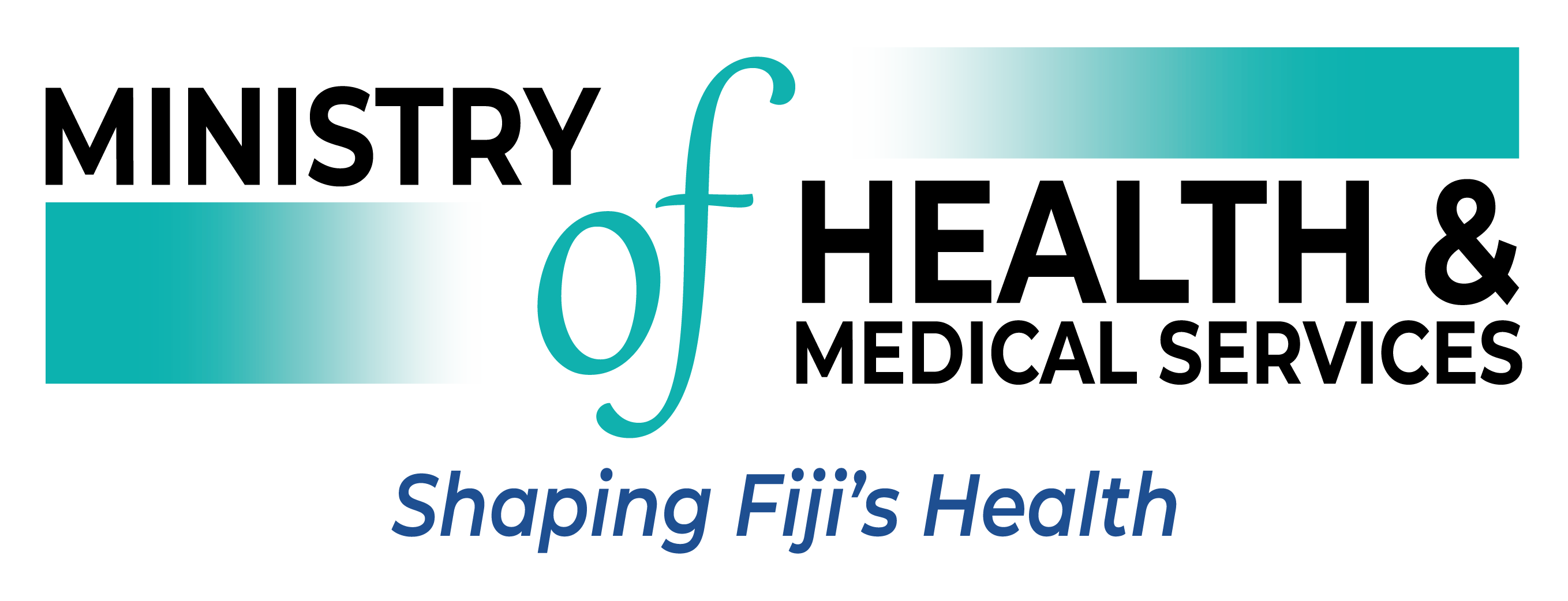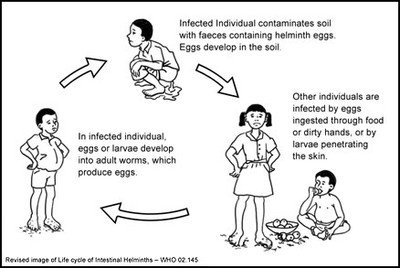What is it?
Soil-transmitted helminth (STH) infections are among the most common infections worldwide and affect the poorest and most deprived communities. They are transmitted by eggs present in human faeces (waste/poo) which in turn contaminate soil in areas where sanitation is poor.
“Helminth” means parasitic worm. The main species that infect people are the roundworm (Ascaris lumbricoides), the whipworm (Trichuris trichiura) and the hookworms (Necator americanus and Ancylostoma duodenale.) All three STH are common in Fiji.
Source: www.cdc.gov
Soil-transmitted helminth infection is found mainly in areas with warm and moist climates where sanitation and hygiene are poor, including in temperate zones during warmer months. These STHs are considered Neglected Tropical Diseases (NTDs) because they inflict tremendous disability and suffering yet can be controlled or eliminated.
STH in Fiji
In Fiji, STH Infection is quite common due to climate conditions in the summer months and poor sanitation and hygiene in some areas.
A recent study was conducted in the Northern Division of Fiji on the Island of Taveuni to estimate the prevalence of hookworm, ascaris and trichuris infection (Thomas et al 2005) and found that the presence of infection was: hookworm 14%, ascaris 33%, trichuris 17%. Further studies are currently being undertaken by MOH in the Western and central divisions to determine STH prevalence in Fiji.
How is it Spread?
All types of STH are intestinal parasites. They live in the intestines and their eggs are passed in the faeces (waste) of an infected person. If an infected person defecates outside (near bushes, in a garden, or field) or if the faeces from an infected person are used as fertilizer, eggs are deposited on soil. They can then mature and hatch, releasing larvae (immature worms). The larvae mature into a form that can penetrate the skin of humans.
Source: www.indonesian-publichealth.com
STH infection (hookworm) is transmitted primarily by walking barefoot on contaminated soil. Other kinds of STH can also be transmitted through the ingestion of larvae or infective eggs. This can happen when hands or fingers that have contaminated dirt on them are put in the mouth or by consuming vegetables or fruits that have not been carefully cooked, washed or peeled.
Who is most at risk?
Infection is a risk in warm and humid climates such as Fiji, when sanitation and hygiene are poor, especially during warmer, wetter months. Persons in these areas are at risk if they walk barefoot or in other ways allow their skin to have direct contact with contaminated soil. (Children who play in contaminated soil may
Also be at risk.) People are also at risk if soil contaminated with human faeces enters their mouths or if they eat vegetables or fruit that have not been carefully washed, peeled or cooked.
What are the Symptoms?
Hookworm
Itching and a localised rash are often the first signs of infection. These symptoms occur when the larvae penetrate the skin. A person with a light infection may have no symptoms. A person with a heavy infection may experience abdominal pain, diarrhoea, loss of appetite, weight loss, fatigue and anemia. The physical and cognitive growth of children can be affected.
Round Worm
People infected with Ascaris often show no symptoms. If symptoms do occur they can be light and include abdominal discomfort. Heavy infections can cause intestinal blockage and impair growth in children. Other symptoms such as cough are due to migration of the worms through the body.
Whipworm
People with light infections usually have no signs or symptoms. People with heavy infections can experience frequent, painful passage of stool that contains a mixture of mucus, water, and blood. The diarrhoea typically has an acrid smell. In severe cases growth retardation can occur. Rectal prolapse can also occur. In children, heavy infection may be associated with growth retardation and impaired cognitive development.
How do I reduce my risk of STH Infection?
- Avoid contact with soil that may be contaminated with human faeces, including with human faecal matter used to fertilize crops.
- Wash your hands with soap and warm water before handling food.
- Teach children the importance of washing hands to prevent infection.
- Wash, peel, or cook all raw vegetables and fruits before eating, particularly those that have been grown in soil that has been fertilized with manure.
- Do not walk barefoot in areas where hookworm is common and where there may be fecal contamination of the soil.
Transmission of infection to others can be prevented by not defecating outdoors, and through effective sewage disposal systems in homes, villages and towns.
How is it Diagnosed?
Hookworm
Health care providers can diagnose hookworm by taking a stool sample and using a microscope to look for the presence of hookworm eggs.
Roundworm
Health care providers can diagnose ascariasis by taking a stool sample and using a microscope to look for the presence of eggs. Some people notice infection when a worm is passed in their stool or is coughed up. If this happens, bring in the worm specimen to your health care provider for diagnosis.
Whipworm
Health care providers can diagnose whipworm by taking a stool sample. By using a microscope, providers can look for the presence of whipworm eggs.
How is it treated?
Hookworm
Hookworm infections are generally treated for 1-3 days with medication prescribed by your health care provider. The drugs are effective and appear to have few side effects. Iron supplements may be prescribed if you have anaemia. See more on the MOH NIMS Program
Roundworm
Anthelminthic medications (drugs that rid the body of parasitic worms), such as albendazole and mebendazole, are the drugs of choice for treatment. Infections are generally treated for 1-3 days. The recommended medications are effective.
Whipworm
Whipworm infections are generally treated for 1-3 days with medication prescribed by your health care provider. The drugs are effective and appear to have few side effects.
Most of the information on this page was adapted from CDC on STHs
Last Updated on 10 years by Publishing Team


